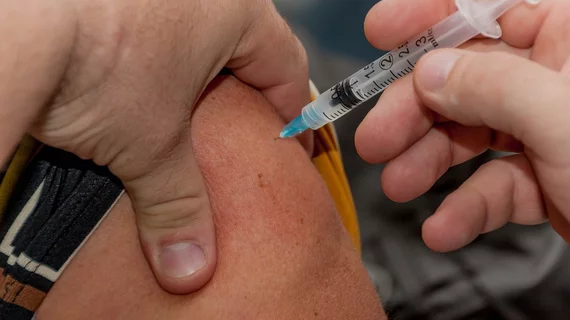How VR can encourage more adults to get their flu shots
Virtual reality (VR) simulations could help improve flu vaccination rates, according to new findings published in Vaccine.
Researchers from Oak Ridge Associated Universities (ORAU) and the University of Georgia (UGA) worked together on the study, examining how VR can improve vaccination rates among adults between the ages of 18 and 49. More than 150 participants with no plans to receive a flu shot during the 2017-2018 influenza season were randomly assigned to one of four groups, with each group taking a different step to encourage them to get their flu shot. While one group wore a VR headset for five minutes, the second group watched a five-minute video without any VR, the third group was given an e-pamphlet to read and the final group was simply given a previously written statement from the CDC.
Overall, the VR intervention resulted in “increased concern about transmitting influenza to others” while the video and e-pamphlet interventions made no such impact.
“When it comes to health issues, including flu, virtual reality holds promise because it can help people see the possible effects of their decisions, such as not getting a flu vaccine,” lead author Glen Nowak, PhD, director of the Center for Health and Risk Communication at UGA’s Grady College of Journalism and Mass Communication, said in a prepared statement. “In this study, we used immersive virtual reality to show people three outcomes—how, if infected, they can pass the flu on to others; what can happen when young children or older people get the flu; and how being vaccinated helps protect the person who is vaccinated as well as others. Immersive VR increases our ability to give people a sense of what can happen if they do or don’t take a recommended action.”
Karen Carera, PhD, a senior evaluation specialist from ORAU, noted in the same statement that this research could help bring about change that healthcare providers have been hoping to see for quite some time.
“We really haven’t been able to move the adult vaccine rate, so we wanted to look at another way we could involve people and have a more interactive experience rather than just having them read something on a sheet of paper,” Carera said.
In the future, the team hopes to do another study with more participants. In addition, according to Carera, VR could potentially help improve vaccination rates among the parents of young children.

